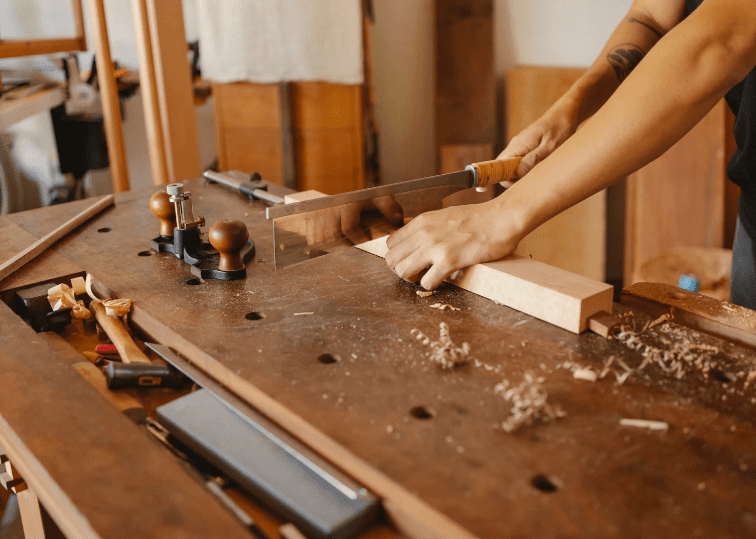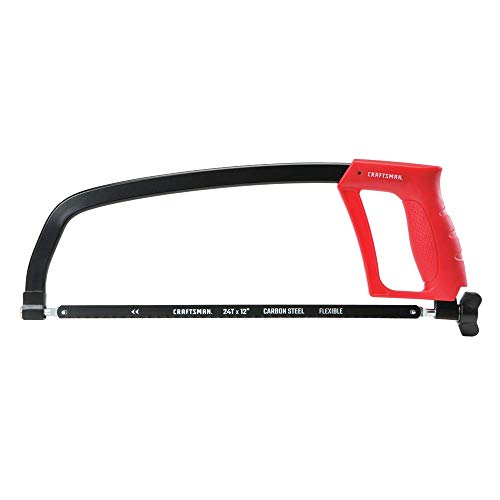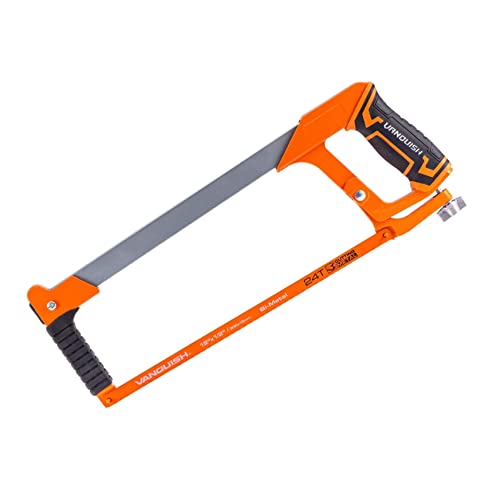
With its versatile uses, a hacksaw is a must-have tool for every DIY enthusiast. The journey might seem overwhelming if you’re venturing into the world of hacksaws for the first time.
This guide aims to unravel the mysteries of the hacksaw, exploring all aspects, from its basic components to selecting the right one for your projects. A detailed step-by-step guide on using a hacksaw safely and effectively is provided, along with an in-depth look into its varied applications.
Insight into cutting various materials and recognizing when to change your hacksaw blade is also included. Consider this guide a comprehensive resource if you’re starting or seeking to enhance your hacking skills!
Deciphering the Hacksaw Basics
A hacksaw is a multifunctional hand tool predominantly used for slicing through various materials. Its fine-toothed blade promises precision and straight cuts, making it a preferred choice for wood and metal tasks.
For optimal results, selecting the appropriate hacksaw and employing correct cutting techniques, like pushing strokes and selecting the ideal blade for cutting materials like sheet metal, is vital.
Recognizing the Components of a Hacksaw
Before embarking on any cutting task, understanding the hacksaw’s constituent parts is crucial. The essential components include a frame, handle, and blade. The frame offers stability for accurate cuts, and the handle ensures a comfortable grip, minimizing hand strain during prolonged usage.
Selecting a blade with the proper tooth count for the material and mastering its use in forward and push strokes are critical for successful hacksaw applications.
Selecting the Suitable Hacksaw
When choosing a hacksaw, material consideration is crucial. Different blades offer varying teeth per inch (TPI), necessitating careful selection. A blade with fewer teeth is ideal for hard materials, while thin materials like sheet metal require an edge with more teeth for smoother cuts. Also, prioritize selecting a hacksaw with robust frame construction to ensure long-lasting durability.
Hacksaw Blades: A Selection Guide
Choosing a blade requires consideration of the cutting task’s specifics. Carbon steel blades are versatile, while high-speed steel (HSS) blades excel in cutting hard materials. For functions involving ceramic or glass, ceramic blades are your best bet. Ensure the blade suits the material and consider TPI and tooth configuration for peak performance.
A Comprehensive Guide to Hacksaw Usage
Secure the material and install the blade with teeth facing forward for successful hacksaw usage. Apply consistent pressure and use the entire blade length for cuts. Regularly remove metal residues to maintain efficiency.
Ensuring Blade Installation and Safety
Blade installation demands careful loosening of wing nuts or tensioning devices and alignment before tightening. Proper tensioning and ensuring the blade doesn’t extend too far beyond the frame are crucial. Always prioritize safety by using safety gear and working in well-ventilated spaces.
Hacksaw Maintenance for Longevity
Regular cleaning, lubrication, and storage in dry places are pivotal for maintaining your hacksaw. Periodically inspect and replace the blade and frame as needed to ensure optimal functionality.
Hacksaw: Varied Applications
Hacksaws excel in diverse applications, from cutting pipes in plumbing to making precise woodcuts and trimming metal frames. Their versatility makes them indispensable for various DIY projects.

Cutting Tips for Diverse Materials
For cutting thin metals, use a fine-toothed hacksaw; choose one with more teeth for more rigid materials. Use lubricants for hard materials and consider other saw types for large wood pieces. Keep these tips in mind for precise cuts.
Blade Replacement and High-Tension Hacksaw Insights
Regularly check your blade for wear and keep spares handy. Understand the benefits of a high-tension hacksaw for harder materials, with its adjustable blade tension and stronger frame, compared to a standard hacksaw.
Conclusion
The hacksaw, a multifunctional tool, is essential for varied cutting tasks. Knowledge of its basics, right selection, proper usage, and maintenance is crucial for anyone looking to master the art of hacksawing.
Hacksaws remain integral tools for many professionals like plumbers and electricians due to their versatility in cutting through various workpieces. Brands like Stanley are renowned for their durable hacksaws featuring ergonomic pistol grip designs, ensuring comfort and efficiency during the pull stroke and allowing for meticulous work on alloys and other materials.
For individuals working on home projects or in professional fields, understanding the proper use and maintenance of hacksaws is paramount. You can enhance your cutting capabilities by adhering to safety protocols, understanding when to replace blades, and distinguishing between standard and high-tension hacksaws.
So, equip yourself with these hacksaw insights and elevate your DIY endeavors!
Last update on 2024-07-26 / Affiliate links / Images from Amazon Product Advertising API
































